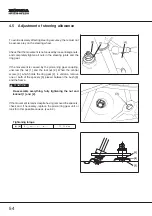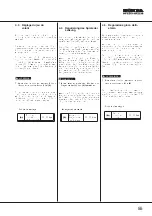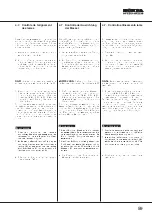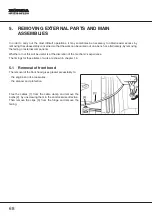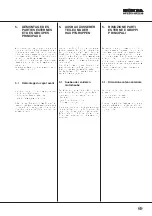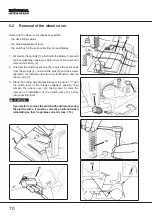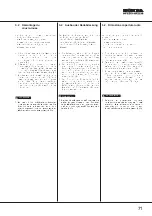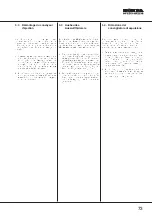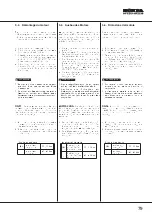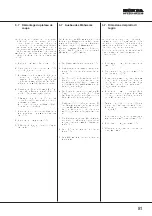
4.11 Drive pedal adjustment (Hydrostatic drive models)
This operation should be carried out every time the pump, the
pedal or the control rod is removed in order to get the correct
travel for the pedal and to enable reaching the envisaged
speeds both forwards and in reverse.
a. Adjusting the limit stop of the pump
1. The control lever [1] on the hydrostatic pump has a limit
stop screw [2] which, if the pedal is forcefully pushed
completely down, prevents the internal parts of the pump
from being overloaded.
2. To adjust the position of the limit stop, loosen the screw
[2]
and push the lever [1] completely forwards by hand.
3. Tighten the screw [2] until it touches the stop pin [3],
release the lever, tighten the screw by another half turn for
safety and then tighten the locknut [4].
b. Adjusting the pedal’s position
1. The pedal is in the ideal position when the distance
between the articulated joint [5] and the fork [6] of the
control rod is 133 ÷ 134.5 mm [A]. Having checked and
adjusted the length, ensure that the two locknuts [7] for the
articulated joint and the fork are fully tightened.
2. At this distance, the position of the pedal in neutral “N”
compared to the footboard should be as shown in the
drawing.
c. Adjusting the “neutral” position
·
This is a very important adjustment for the operation of
the safety devices regarding permitting starting and
stopping of the lawn-tractor during work.
1. The neutral position “N” is signalled to the micro-switch
[ 8]
via a pin which is on the lever [1].
2. After having checked that the adjustment “B” has been
correctly made, with the pedal released loosen the two
fixing nuts [9] for the micro-switch [8] and move it along the
fixing slots until the switch can be heard to click.
3. Attach the micro-switch and put the pedal into the forward
movement, neutral and reverse positions, making sure that
the click of the switch can be heard every time the position
is changed.
!
WARNING :
66



